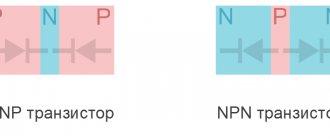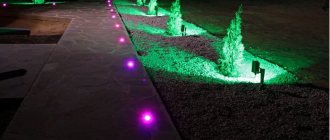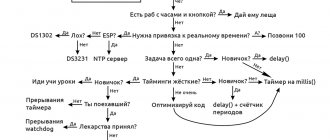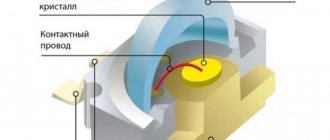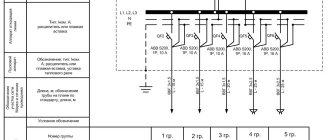Electrician in the house
Encyclopedia about electricity from A to Z
Masters catalog
Find the best master or company in your city
Combined natural and artificial general lighting of the room
Lighting in an apartment, house, industrial or office space is divided into many types. Each of these types has its own purpose and goals.
The correct choice of lighting type allows you to not only create comfortable conditions, but also performs many purely functional tasks. Therefore, in this article we will try to understand all types of lighting and determine which of them are used in which cases.
- Daylight
- Artificial lighting General lighting
- Zonal and local lighting
- Decorative lighting
- Emergency lighting
- Outdoor and security lighting
- Architectural, advertising and display lighting
What is lighting
Lighting is light that can come from both natural and artificial sources. The quality of light is determined by its brightness, uniformity of distribution and a number of other characteristics.
If natural light is difficult to regulate, then artificial light has a number of requirements. It is divided into different types depending on the purpose, location and other factors. Most often, a combination of natural and artificial lighting is used. Combining the two options allows you to achieve a better effect.
Lighting is an essential element of any room.
Types of lighting equipment
Lighting equipment can be lanterns, lamps, various lamps, and spotlights.
Lighting devices can vary in the effect they produce:
- spot lighting (directional lighting);
- blurry lighting (scattered light);
- creating various lighting effects.
Professional lighting instruments include:
- color changers;
- scanners;
- rotating heads;
- gobo spotlights;
- anti-aircraft searchlights;
- lasers;
- LEDs. Read about the use of LED lighting here.
Daylight
This is the light coming from the sun during the daytime. Indicators may vary depending on the region, cloud cover, location of buildings and trees near the building. The following types of lighting are distinguished:
- Lateral. It enters the premises through window openings, which can be located on one or two or more sides, it all depends on the characteristics of the building. When designing buildings, the optimal window sizes are determined to ensure normal penetration of natural light. It is also taken into account that the southern and eastern sides are illuminated much better than the western and northern ones.
- Upper. In residential buildings it is implemented through the installation of skylights that are built into the roof. Dome and other similar structures are often used in greenhouses or swimming pools. In industrial premises, so-called lanterns are used - roof superstructures with windows on both sides. Suitable for large buildings in which light from windows does not penetrate deep into workshops or warehouses.
Overhead lighting is most often used in public buildings. - Combined. This is a combination of top and side lighting that allows you to achieve better results. But this option is the most difficult to implement and cannot always be used.
The natural light factor is an indicator that is used during testing. Measurements are carried out using special equipment.
Artificial lighting
This option is used when there is a lack of natural light. It allows you to provide optimal conditions regardless of external conditions, therefore it is considered basic. Depending on the purpose, there are different types of lighting of this type, each with its own characteristics.
General lighting
General lighting should provide ideal visibility.
Can be used both outdoors and indoors. Available almost everywhere, often this is the only option that is sufficient for normal work or leisure. We must remember the following:
- Lamps are most often located on the ceiling, but can also be installed on walls.
- Different types of premises have their own lighting standards, which should be adhered to when choosing equipment and its power.
- The uniformity of the light flux distribution is of great importance. Therefore, powerful lamps with diffused shades are used. Indicators are measured in areas that are poorly lit.
- When lighting an area, the location of the lanterns is selected so as to ensure normal working conditions at a production or any other site. Often, the most important places or high-risk objects are highlighted additionally to increase safety.
- In industrial premises, the location of lamps, their type and power are selected in advance. Installation work is carried out strictly according to the project.
- In living rooms, general lighting is most often provided by a chandelier. But there may be options using several built-in lights or other equipment.
If there are many employees over 40 working in the room, lighting standards need to be increased.
Zonal and local
These types of electric lighting are used as additional ones. With their help, you can ensure the convenience of work or rest, as well as illuminate an area of the room, if necessary. It is important to remember the following:
- The zone option allows you to select a specific zone if required to complete the work. For example, this option is often used in the kitchen, when lighting the workspace.
Zoning the dining area in the kitchen. - Local lighting allows you to highlight a small area. For example, there is no point in lighting a work table or machine from above; it is much more reasonable to install a lamp with directional light and an adjustable shade. This includes wall and bedside lamps.
- When choosing equipment, it is worth remembering that the selected area should not be much brighter than the space around it. This is especially true for directional lamps. A large difference in brightness causes visual discomfort and provokes rapid eye fatigue.
Decorative
This option is necessary for placing accents in the room, highlighting objects or zones. It is always used additionally. The features are:
- You can use built-in equipment, as well as wall, ceiling or floor lamps. It is best to use models with adjustable shades to customize them to the specific features of the room.
- For illumination of paintings or sculptures, small-sized options are selected. Here it is important to focus attention on a certain object, but not to highlight it too much.
- Backlighting can be used in aquariums, swimming pools, along paths on the property, or even in flower beds and alpine slides. There are no restrictions, but for open air equipment with increased resistance to moisture is selected.
Decorative lighting can be a full-fledged element of interior design.
Architectural, advertising and display
These lighting systems are used for exterior design and must therefore meet a number of requirements. It is especially important to comply with the standards in dense urban areas and an abundance of light sources. The following is important:
- Architectural lighting should not fall out of the general range if the building is located in the city. There are no special restrictions in private areas; the main thing is to choose safe and economical equipment. Nowadays technology allows you to spend a minimum of energy on lighting thanks to LED lamps.
Architectural lighting makes a building stand out from the general background. - Advertising lighting should draw attention to billboards and other objects. At the same time, it is regulated by a number of standards and is coordinated with the city authorities or the organization servicing the route. Indoor advertising elements stand out not only due to brightness, but also due to color; dynamic lighting or various flashing signs are often used for these purposes.
- There are standards for shop windows. They should not dazzle pedestrians and drivers or create too bright areas. In addition, different types of products have their own recommendations; in some places it is better to use cold light, and in others it is better to use warm light.
By the way! Showcases can have general lighting and accent areas in order to highlight individual products.
Emergency
This option is necessary for the evacuation or safe movement of people during power outages. The development of the system is carried out taking into account a number of requirements and is approved by the supervisory authorities. The features are:
- Equipment with an autonomous power source is used. Most often these are LED lamps with a battery.
- The illumination rate is at least 5% of the indicators used in standard conditions.
- Exits and flights of stairs must be marked. The distance between lamps should not exceed 25 m.
Emergency lighting ensures safe movement.
Shower and toilet
In addition to general lighting, it is also good to have mirror lighting in the toilet. This could be a sconce or lighting mounted in a mirror. Its main purpose is to shine light on the face without creating cast shadows. Therefore, it is good if the sconce has a general flood light or with the ability to rotate the lampshade.
Interesting solutions can be obtained with LED backlights. It is only important to remember that it makes sense to highlight something beautiful. This could be a wall made of an unusual material (for example, stone, wood or relief) or a separate interesting element on the wall.
When choosing lamps for wet rooms, you must also look at the level of protection against moisture. It is designated IP44, where the first is protection against penetration of solid objects and dust on a scale of 0-6, the second is the degree of protection from moisture on a scale from 0 to 8. More about this in our other post about the protection class of devices - here . If the lamp is marked IP44, it is suitable for wet rooms.
Separation by purpose
Depending on the purpose, there are different types of electric lighting. The main ones are:
- Industrial buildings and facilities, as well as public spaces. These could be workshops and offices, as well as school classrooms or warehouses. The list is large and each type has its own standards and requirements.
- Private houses and apartments. Here, not only high-quality lighting of the rooms matters, but also interior design. There are no hard standards in residential areas, but there are recommended indicators.
- Street lighting. There are two options here - street lights in populated areas and local light sources in courtyards and private areas.
Street lights can also be decorative if used to illuminate the facade.
Modern trends
Among modern techniques for lighting in an apartment, it is appropriate to use various lighting and decorative details as decoration or to enhance the design. These options will be the most interesting to consider.
Night lighting in the apartment
Rice. 7. Night lighting in the apartment
Night lighting is designed to create an atmosphere of comfort at a time when no active activities are taking place in the apartment. Such elements allow you to decorate dark corridors, the living room, create the effect of a starry sky in the bedroom, or highlight the contours of the ceiling pattern. In some cases, they act as a night light and can help household members orient themselves while moving to the bathroom or kitchen.
Motion sensors
Contactless switches have long occupied an important niche in lighting areas, retail facilities, and roadways, but now they are also used in apartments. For example, in the corridor or on the balcony, where the time spent is relatively short, and reaching the switch is not always convenient. The motion sensor turns on the light for a set period of time, after which the relay turns it off again.
Wireless lamps
Battery-powered lighting devices are installed in places where supplying a separate power supply line is impractical or in cases where the owner does not want to spoil the finishing work by gating walls and laying new wiring. Such lamps are not necessarily tied to any installation location; they can be fixed either permanently or moved from place to place.
Lighting methods
They depend on the design of the lamps and are selected individually. It’s easy to understand the features:
- Directional light - thanks to the reflector, it spreads to a specific surface and highlights it well.
- Reflected - the flow is directed to the ceiling and walls and floods the room with uniform light.
Reflected light in a modern interior. - Diffused - due to the shade made of matte material, the light is evenly distributed around.
- Mixed - combines two or three options to ensure a good result.
It is not difficult to understand the features of lighting and its varieties if you use the information from the review. The main thing is to comply with the standards and recommendations established for a certain area.
Light in the nursery
A child’s room is a whole world with many tasks and functions - it is a bedroom, a playroom, and a workplace. There should be general lighting in the form of a chandelier or spotlights, a sconce by the bed (or pendant lamp), a table lamp, and possibly some other additional decorative lighting.
It is advisable to choose a sconce by the bed in the nursery with a power button on the body and a rotating one so that you can adjust the direction of the light. The installation height of the sconce is at least 50 cm above the bed.
